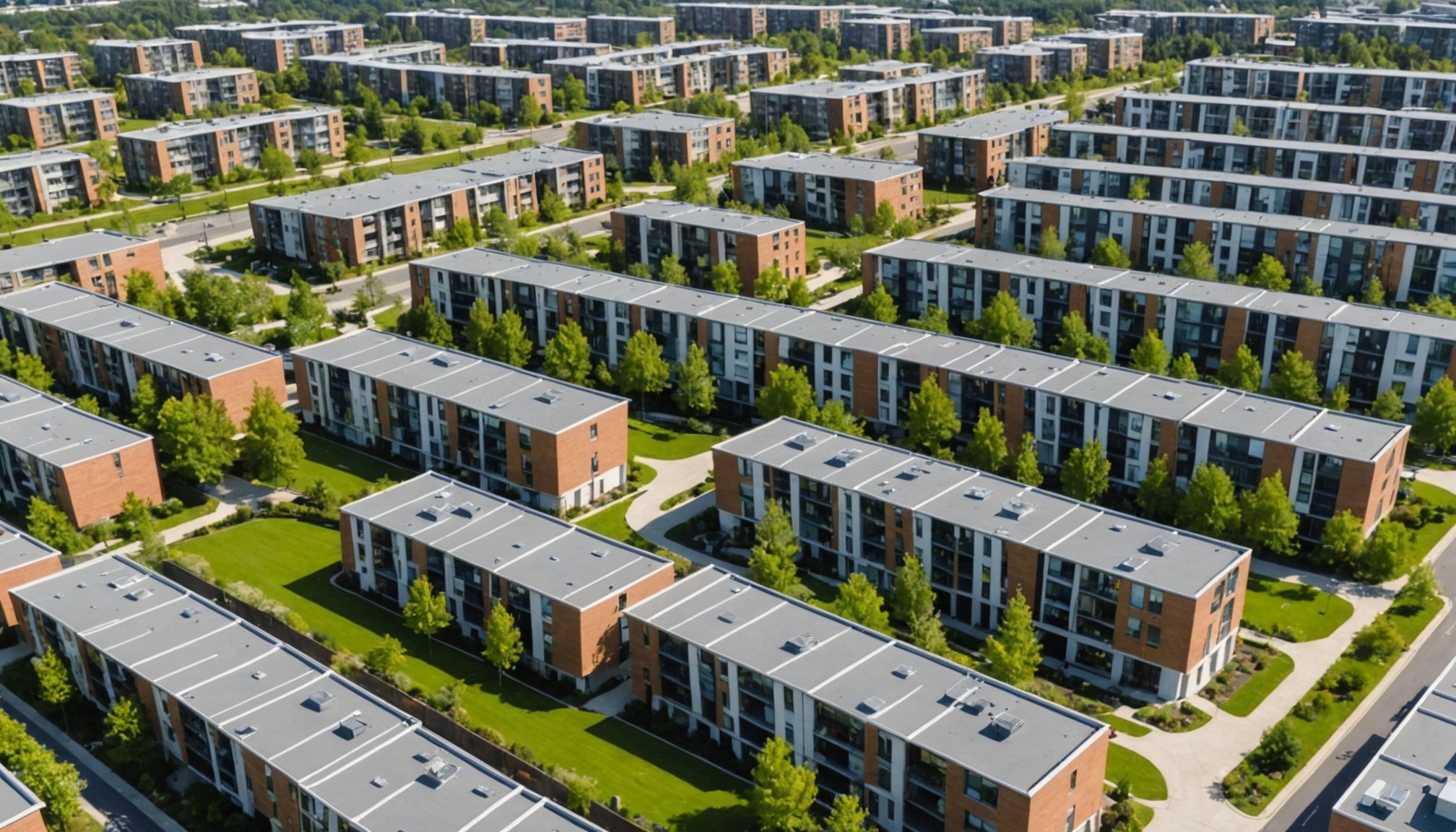Navigating Legal Pathways: How to Resolve Boundary Disputes in New Residential Developments
When it comes to new residential developments, one of the most common and potentially contentious issues that can arise is boundary disputes. These disputes can be stressful, costly, and time-consuming, but understanding the legal pathways and strategies for resolution can make a significant difference. Here’s a comprehensive guide to help you navigate these complex issues.
Understanding Boundary Disputes
Boundary disputes can occur for a variety of reasons, including unclear property lines, encroaching structures, or disagreements over the interpretation of deeds and survey maps. Here are some key points to understand:
Also read : Exploring Creative Funding Solutions for First-Time Property Developers in Swansea
What is a Boundary Dispute?
A boundary dispute is a disagreement between property owners regarding the exact location of the boundary line between their properties. This can involve issues such as where a fence or wall should be placed, whether a structure encroaches on neighboring land, or disputes over the use of shared spaces.
Why Do Boundary Disputes Arise?
Boundary disputes often arise due to:
Also to see : Exploring the Economic Ripple Effect of Student Housing in College Towns: A Case Study of Oxford
- Unclear Property Lines: If the property deeds or survey maps are not clear, it can lead to confusion about where one property ends and another begins.
- Encroaching Structures: When a property owner builds a fence, wall, or other structure that encroaches on neighboring land, it can spark a dispute.
- Changes in Land Use: Changes in how land is used, such as the construction of new buildings or the creation of new pathways, can lead to disputes over boundaries.
Legal Framework for Boundary Disputes
Understanding the legal framework is crucial for resolving boundary disputes. Here’s what you need to know:
The Role of Deeds and Survey Maps
Deeds and survey maps are essential documents that define property boundaries. However, these documents can sometimes be ambiguous or outdated, leading to disputes.
| Document | Description |
|
|-----------------------------------------------------------------------------|
| Deeds | Official documents that transfer ownership of a property. |
| Survey Maps | Detailed maps created by surveyors to define property boundaries. |
| Title Reports | Documents that summarize the ownership history and any encumbrances. |
Relevant Laws and Regulations
In many jurisdictions, laws such as the one outlined in the French Civil Code (Article 646) give property owners the right to demand a boundary survey from their neighbors. Here’s how it works:
- Mandatory Boundary Survey: If one property owner wants to establish clear boundaries, they can compel their neighbor to participate in a boundary survey. The costs are typically shared between the parties involved[1].
Resolving Boundary Disputes Amicably
Before resorting to litigation, it’s often advisable to try to resolve boundary disputes amicably. Here are some steps you can take:
Mediation and Alternative Dispute Resolution
Mediation is a process where a neutral third party helps the disputing parties reach an agreement. This method is often preferred because it is less confrontational and can preserve the relationship between neighbors.
- **Choose a Mediator**: Select a mediator who is experienced in property disputes.
- **Prepare for the Mediation**: Gather all relevant documents, including deeds, survey maps, and any communication with the other party.
- **Be Open to Compromise**: Be willing to listen to the other party’s perspective and be open to finding a mutually acceptable solution.
Using Chartered Surveyors
Chartered surveyors can play a crucial role in resolving boundary disputes by providing an expert opinion on the location of property boundaries.
- **Hire a Chartered Surveyor**: Engage a surveyor to conduct a thorough survey of the property.
- **Review the Report**: Carefully review the survey report to understand the findings.
- **Negotiate Based on the Report**: Use the survey report as a basis for negotiations with your neighbor.
Litigation: The Last Resort
If amicable resolution is not possible, litigation may be the next step. Here’s what you need to know:
The Litigation Process
The litigation process involves taking the dispute to court, where a judge will make a final decision based on the evidence presented.
- **File a Lawsuit**: File a lawsuit in the appropriate court, typically a civil or property court.
- **Gather Evidence**: Collect all relevant evidence, including deeds, survey maps, and witness statements.
- **Present Your Case**: Present your case in court, either personally or through a lawyer.
- **Await the Judgment**: Wait for the court’s decision, which will determine the boundary line.
Example of a Boundary Dispute Case
In a case where a property owner built a fence that the neighbor claimed encroached on their land, the court might appoint an expert to determine the exact boundary line. Here’s an example:
- **Expert Appointment**: The court appoints a surveyor to conduct a detailed survey.
- **Report and Recommendations**: The surveyor submits a report with recommendations on the boundary line.
- **Court Decision**: The court makes a final decision based on the surveyor’s report, which is then enforced[1].
Practical Advice for Property Owners
Here are some practical tips for property owners to help prevent or resolve boundary disputes:
Keep Clear Records
Maintain clear and up-to-date records of your property, including deeds, survey maps, and any communication with your neighbors.
Communicate Effectively
Good communication is key. If you notice any potential issues, address them promptly with your neighbor.
Seek Legal Advice
If you are unsure about any aspect of your property boundaries, seek advice from a real estate lawyer.
Use Technology
Utilize modern surveying technologies, such as GPS and drone surveys, to get accurate and detailed maps of your property.
Table: Comparing Amicable Resolution and Litigation
Here is a comparative table to help you decide between amicable resolution and litigation:
| Method | Description | Advantages | Disadvantages |
|---|---|---|---|
| Amicable Resolution | Mediation or negotiation between parties. | Less costly, preserves relationships, faster resolution. | Requires cooperation from both parties. |
| Litigation | Taking the dispute to court. | Provides a binding decision, can be more definitive. | Costly, time-consuming, adversarial. |
Quotes from Experts
Here are some quotes from experts that highlight the importance of careful planning and communication in resolving boundary disputes:
- “Boundary disputes can be incredibly stressful and costly. It’s crucial to address any issues promptly and seek professional advice to avoid escalation.” – John Smith, Real Estate Lawyer
- “Mediation is often the best way to resolve boundary disputes because it allows both parties to find a mutually acceptable solution without the need for costly litigation.” – Jane Doe, Mediator
Navigating boundary disputes in new residential developments requires a thorough understanding of the legal framework, effective communication, and sometimes the help of professionals like chartered surveyors and mediators. By keeping clear records, communicating effectively, and seeking legal advice when necessary, property owners can avoid or resolve boundary disputes efficiently.
Remember, resolving boundary disputes is not just about winning an argument; it’s about finding a solution that respects the rights of all parties involved and maintains good neighborly relations. Whether through amicable resolution or litigation, the goal is always to establish clear and legally binding property boundaries that everyone can agree on.
Practical Tips for Navigating Boundary Disputes
Navigating boundary disputes can be challenging for both homeowners and developers. It is crucial to address potential conflicts proactively to prevent escalating issues. Implementing recommended practices before disputes arise can save time, resources, and relationships. Here are some practical tips that can help:
Effective Communication Strategies: Open and honest communication with neighbours is often the key to avoiding misunderstandings. When developing or altering properties, initiate conversations early to create a collaborative environment. Clear communication ensures that all parties have a mutual understanding of boundaries, reducing the potential for disputes.
Key Resources and Tools: Homeowners and developers should consider utilising available tools and resources to resolve or prevent disputes. Surveys and boundary maps offer precise definitions of property lines, leaving little room for doubt. Consulting with legal professionals to review property deeds can also provide clarity and prevent future conflicts.
Recommended Practices: Before any construction or landscaping begins, verify property boundaries to ensure compliance with zoning laws and regulations. This step protects against accidental encroachment and fosters good relationships with neighbours. By implementing these practical tips, disputes can be effectively navigated and often entirely avoided.











